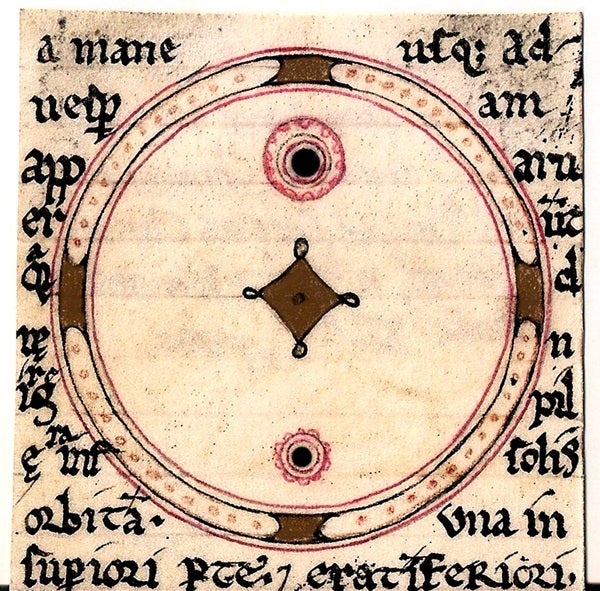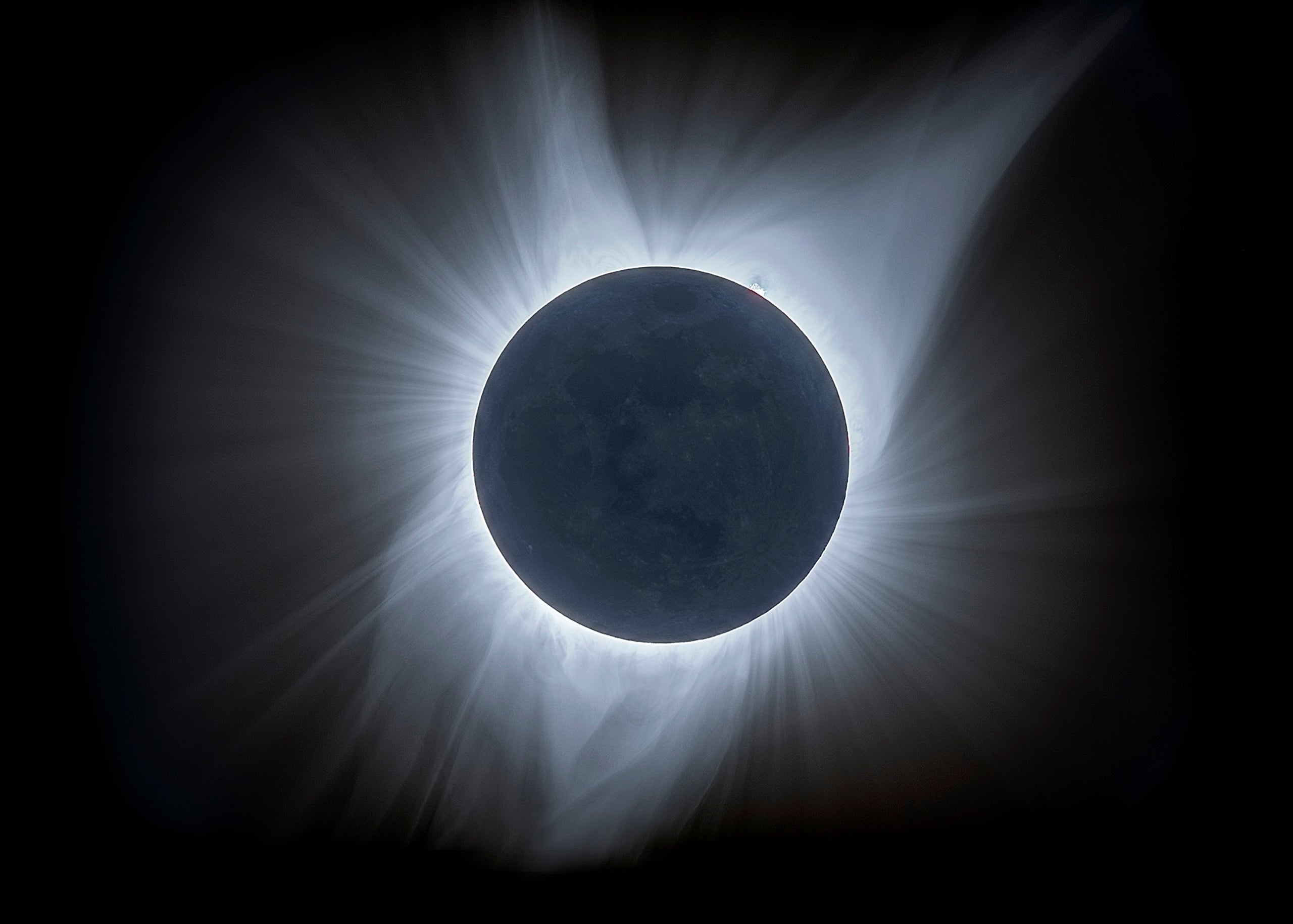Interpretation
The drawing exists in a 12th-century manuscript of a Latin chronicle attributed to “John of Worcester,” who made the observation December 8, 1128, from England. Of it, he wrote, “… from morning till the time of vespers there appeared as it were two dark balls below the orbit of the Sun. One, which was the larger, in the upper part, and the other, which was smaller, in the lower part.”
As Rosenfeld explains in the October 2014 Journal of the Royal Astronomical Society of Canada, the two dark balls were not actually beneath the Sun. “The Sun was placed in the realm of objects not subject to change and corruption,” he says. “Spots could not mar the solar surface by occurring on it, but they could be sublunary objects in orbits beneath the Sun seen against its surface from the Earth.”
If this is the case, then the depictions may be remarkable in that they show a clear distinction between each spot’s umbra (the dark inner part) and penumbra (the light outer region) — namely, they appear as black balls surrounded by concentric red circles; each outer circle is stylized.
While we can interpret the colored circles surrounding the black spots as penumbral regions, Rosenfeld says, other alternatives exist: They could be mere decorative features typical of 12th-century iconography, or their representations also could be decorative features that carry observational information.
“The problem is that the visual conventions of the artist are not our visual conventions,” Rosenfeld explains, “and the rarity of the image, and the paucity of mid-12th-century solar cartographic legends set us at a disadvantage. The passage of nine centuries is hard to overcome!”
Rosenfeld wonders if it is possible to clearly detect the difference between penumbral and umbral regions of great sunspots when observing with the naked eye (suitably protected) or by pinhole or other forms of projection. And thus he is asking us to help.
Today, people often see naked-eye sunspots through safe optical filters. Occasionally, a person can observe a sunspot when fog, haze, or other atmospheric contaminants greatly reduce our star’s glare, particularly near sunset.
In a 1992 Quarterly Journal of the Royal Astronomical Society, H. U. Keller (Zurich Observatory) and T. K. Friedli (Sun Observer Group of Swiss Astronomical Society) reported on sunspot sightings based on observations of naked-eye spots from 20 observers.
They determined that an average eye can see a sunspot with a penumbral diameter of at least 41 arcseconds and an umbral diameter of at least 15 arcseconds. However, the authors also say, “The observers themselves were, of course, not able to distinguish between umbra and penumbra.”
But the absence of evidence is not evidence of absence. How many of those same observers would have seen penumbral shadings had they been asked to look? Also, were any of the observed spots parts of exceedingly large groups?
Rosenfeld considers the possibility of detecting penumbrae via pinhole projection because pinhole cameras in medieval Europe survived from the century after John of Worcester and from earlier in the Middle East. “There may very well be a medieval account which may suggest that solar surface detail (a very prominent sunspot) was detectable by means of a pinhole camera,” Rosenfeld says.
Rosenfeld is eager to hear what you have to report based on your observations and especially welcomes what you see when you use pinhole projection. You can contact Rosenfeld at rosenfel@chass.utoronto.ca, and be sure to copy me at sjomeara31@gmail.com.











